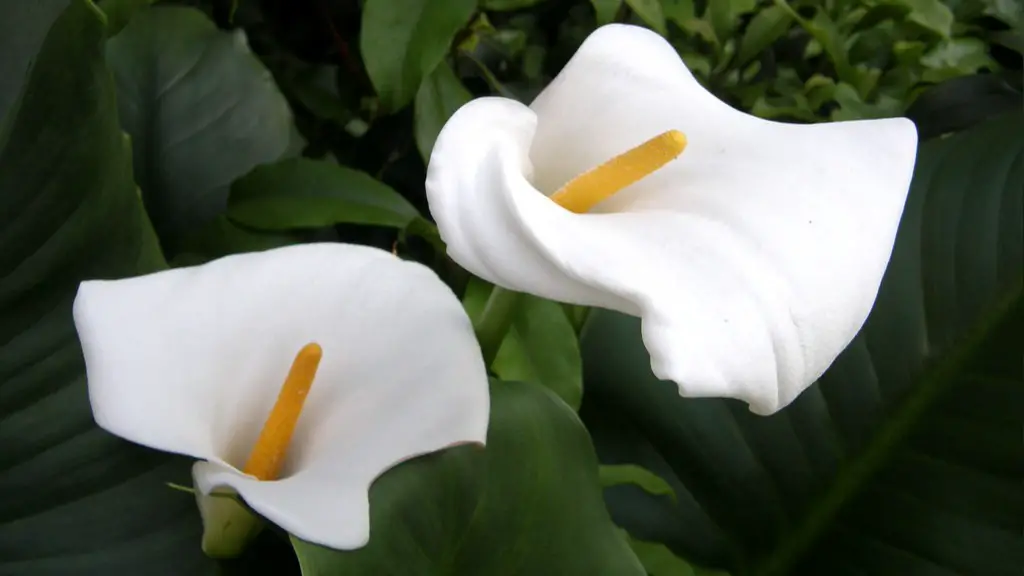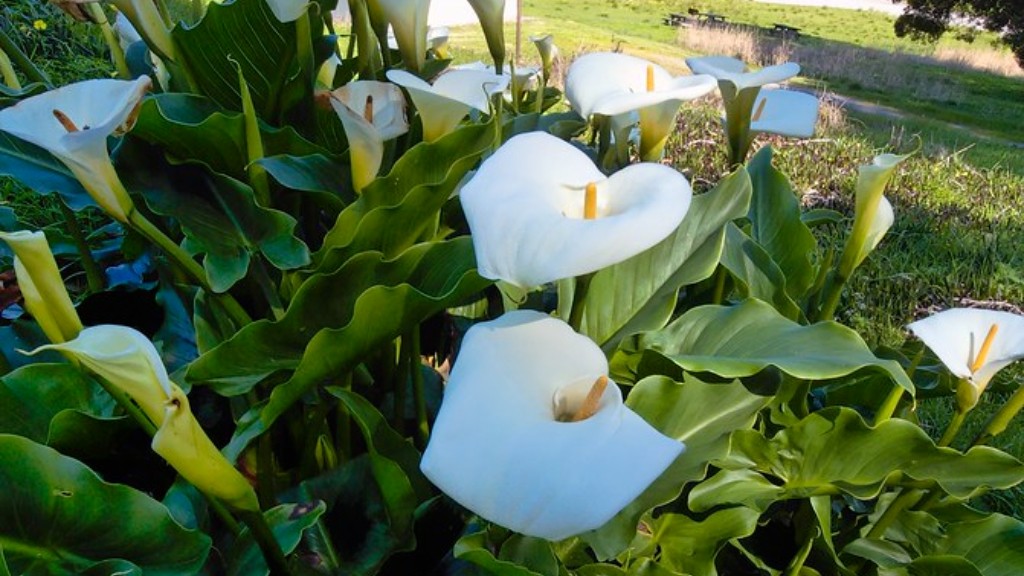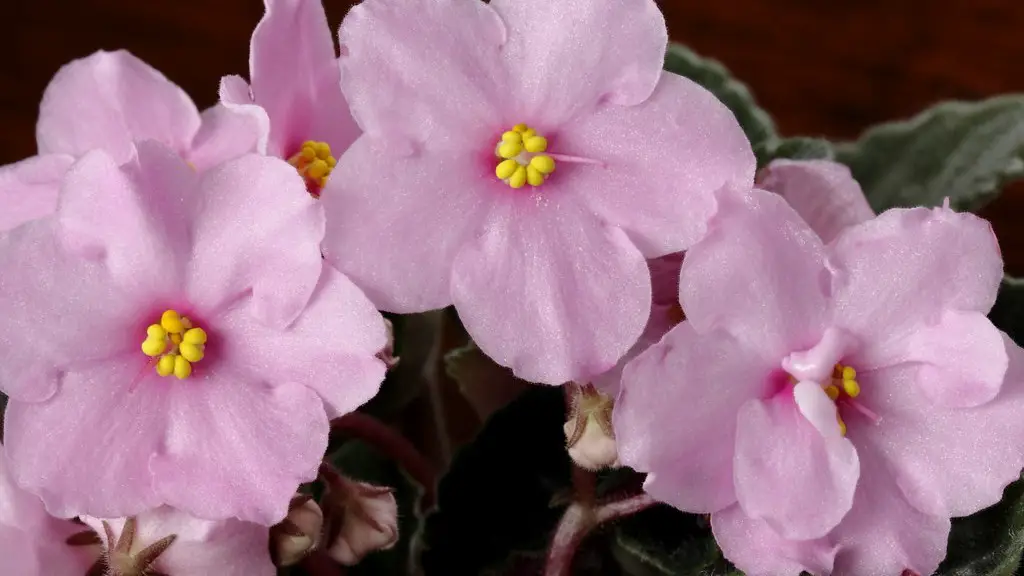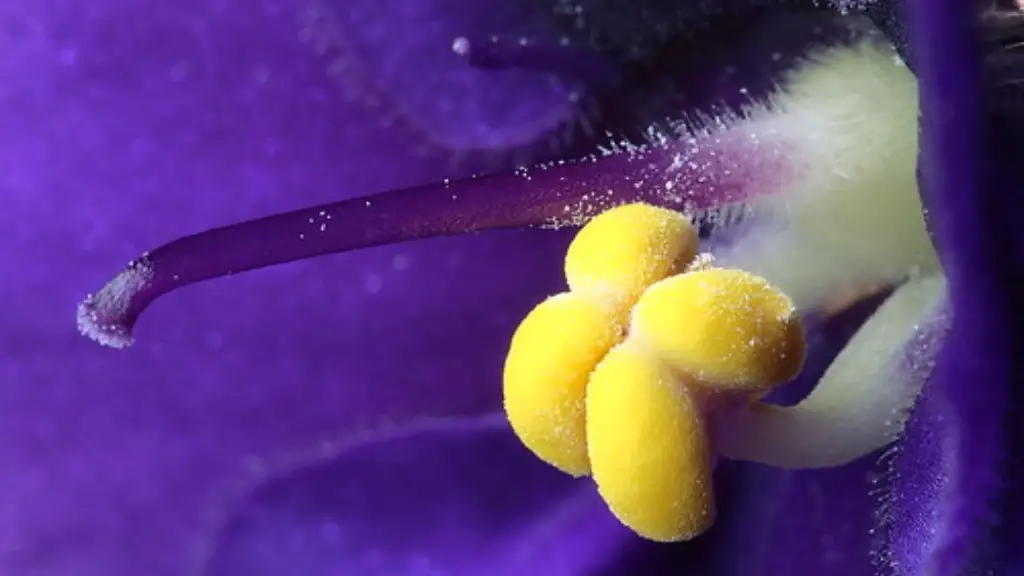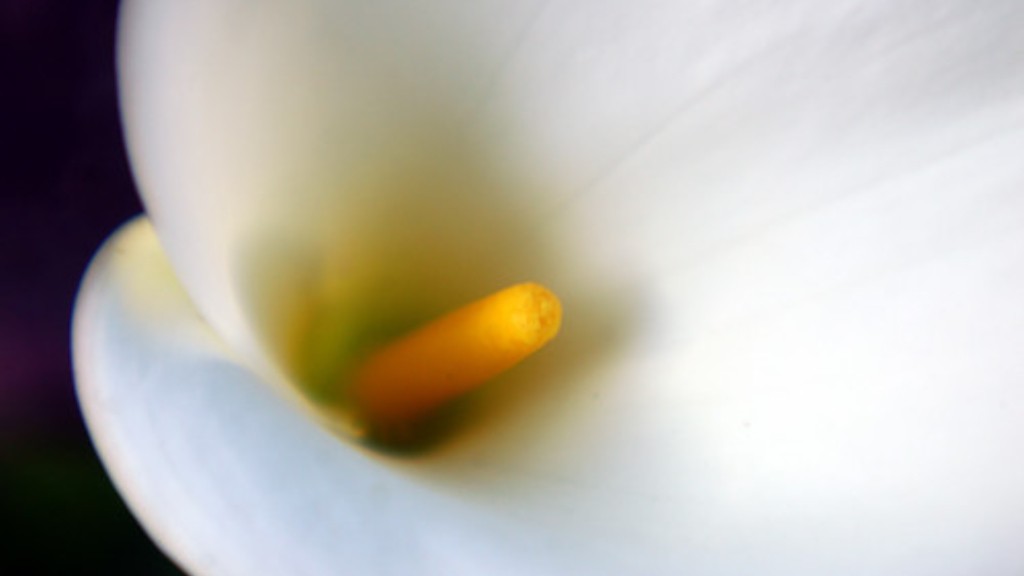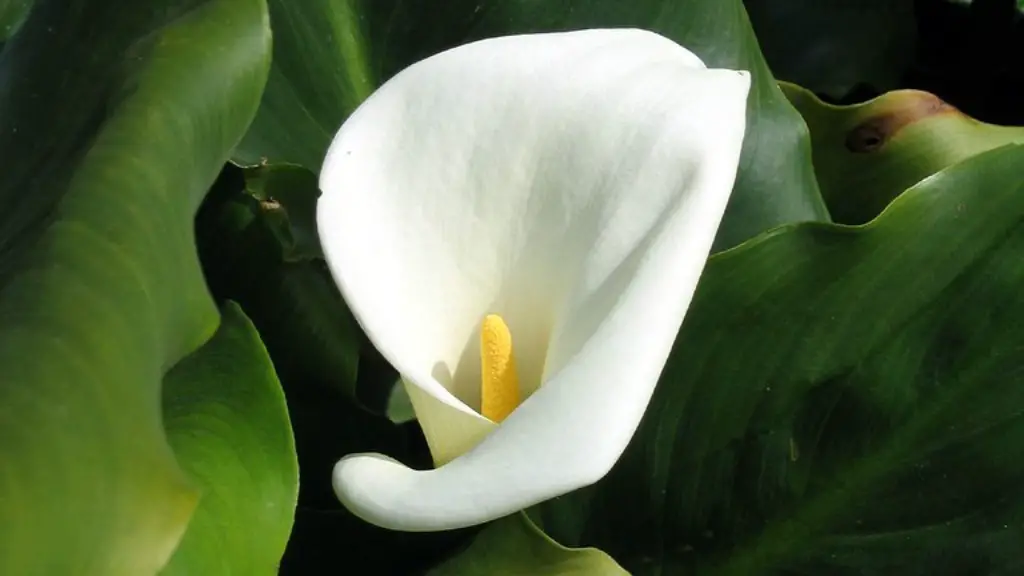A calla lily is a beautiful flowering plant that is popular as a cutting flower and as a potted plant. Calla lilies grow well in a wide range of climates, but they are native to South Africa. If you live in a climate that is too cold to grow calla lilies outdoors, you can grow them indoors. Here are some tips for growing and caring for indoor calla lilies.
Calla lilies need bright, indirect sunlight. They will do best if they are near a south- or west-facing window. If you cannot provide enough natural light, you may need to supplement with grow lights.
Calla lilies like to be kept moist, but they will not tolerate soggy soil. Be sure to plant them in a well-draining potting mix. Water your calla lily when the soil is dry to the touch.
Fertilize your calla lily every two weeks with a water-soluble fertilizer.
To keep your calla lily looking its best, deadhead the flowers as they fade. You can also cut back the foliage if it starts to look ragged.
To care for a calla lily indoors, you will need to provide it with bright, indirect light and keep the soil moist but not soggy. Allow the top inch of soil to dry out between watering and fertilize monthly during the growing season. Calla lilies can be sensitive to drafts, so make sure to keep them away from any open windows or doors.
How long do calla lilies last indoors?
Calla lilies make great cut flowers. They’re easy to arrange and can last for up to two weeks in a vase.
To keep your indoor calla lilies continually moist, water them regularly and never allow them to dry out. You can even keep a little water in the saucer that it sits in, but be sure that it doesn’t sit in standing water for too long.
How often should you water an indoor calla lily
It’s important not to water your calla lilies too heavily, especially after you’ve initially planted them. Once the rhizomes are established, you can water the plants once a week, or more frequently if experiencing especially hot or drought-like conditions.
The Calla Lily is a beautiful plant that can thrive both outdoors and indoors. If you choose to grow your Calla Lily indoors, there are a few things you need to keep in mind in order to keep your plant happy and healthy. First, the Calla Lily prefers a warm climate, so make sure your indoor space is nice and warm. Second, the plant needs bright, indirect light in order to prosper – so a spot near a window would be ideal. And finally, the Calla Lily needs to be kept moist at all times, so be sure to water your plant regularly. With a little bit of care, your Calla Lily will thrive indoors!
Why is my indoor calla lily dying?
If you find your calla lilies sitting in puddles or with mushrooms growing beside them, it’s likely that the soil is compacted and draining poorly. This can cause limp stems and root rot, so it’s important to take corrective action if you notice these problems. loosen the soil around the roots and improve drainage by adding organic matter such as compost. If necessary, you can also reduce watering to help prevent further damage.
If you have a potted calla lily, you can save it and it will bloom again next year. Calla lilies are actually perennials, not annuals as many people think. Just keep the plant in a cool, dark place over the winter and it will be ready to bloom again in the spring.
Do calla lilies go dormant indoors?
As a general rule, calla lilies need to go dormant in order to bloom again. If you are growing them as houseplants, you’ll need to stop watering them and allow the foliage to die back. Once this happens, you can place them in a cool location for two months. After this period, start watering them again and they should start to bloom once more.
If you want your calla lily plant to bloom again, place it in a cool, dark place for two months. Then, bring it back out into the light and resume watering it. The foliage will regrow and you calla lily plant will start to bloom shortly thereafter.
Can you leave calla lilies in pots over winter
Please bring your potted calla lilies indoors before freezing weather arrives, unless you live in Zones 8 to 10. These tropical plants can overwinter outdoors in these zones, but will be damaged or killed in temperatures below 25°F. Place the pots in a sunny window to continue growing, or dig up the rhizomes and store them indoors.
Another benefit of growing calla lilies in pots is that they will not become invasive. In garden beds in their ideal climate, callas may naturalize and take over. However, container-grown callas are restricted to pots and will not become invasive.
How do I know when my calla lily needs water?
If you notice your calla lily leaves turning yellow, wilting, or looking stunted, it’s likely a sign that the plant is not getting enough water. Be sure to give it a good drink and see if that does the trick. If not, you may need to look into other possible causes, such as too much sun or pests.
While chlorosis can be due to a number of reasons, one of the most common is a nutrient deficiency in the soil. This is most often nitrogen, iron, or zinc, but it can also be a deficiency of some other trace element. Calla lilies are particularly susceptible to chlorosis, so it’s important to be aware of this issue if you’re growing them.
There are a number of ways to correct chlorosis, depending on the underlying cause. If it’s due to a nutrient deficiency, then adding the appropriate fertilizer to the soil can be effective. If the problem is due to soil that is too alkaline or too acidic, then adjusting the pH level can also help. In some cases, simply providing the plant with more light can also alleviate the problem.
If you’re having trouble with your calla lilies, it’s a good idea to talk to a gardening expert to figure out what the best course of action is. With a little effort, you should be able to get your plants looking healthy and green again in no time.
How do you keep calla lilies over the winter
Calla lilies (Zantedeschia spp) are tender perennials. Their rhizomes must be dug up in fall and stored indoors over the winter months. After a killing frost, cut off the foliage 1 to 2 inches above the soil surface.
Once the calla flower begins to die, it is time to clip off the spent blossom. Calla lilies don’t drop petals like many other plants, but rather roll up into a tube. These spent blossoms have no purpose and should be removed.
Why do calla lilies cry?
If you notice that your calla lily or other plant is dripping sap, it is likely because the plant is overwatered. When roots are saturated, they put pressure on the rest of the plant which forces the plant to exude its excess moisture in the form of sap. To stop your plant from dripping sap, cut back on watering it.
If you’re looking for a beautiful and long-lasting bouquet, hand-tied calla lilies are a great option. These flowers can last up to 24 hours without water, so you can enjoy them for a good while before needing to worry about changing the water. Just be sure to seal the ends of the stems to keep them fresh.
Are coffee grounds good for calla lilies
If you have a calla lily plant and you notice that the leaves have very dark tips, it’s a good idea to cut back on the fertilizer. Add coffee grounds between fertilizing rounds around the base of the plants to encourage growth. Calla lilies like acidic soil and coffee grounds add acidity.
If your calla lilies do not bloom, the potential reasons include:
-Excess nitrogen in the soil
-Not enough moisture
-Too much shade
-Inadequate dormancy periods
-Foliage removed too early
-Deficient calla lily rhizomes
-Incorrect fertilizer
Final Words
To care for a calla lily indoors, make sure to plant it in a pot that has drainage holes. Water the plant when the top inch of soil is dry, and fertilize it once a month. Place the pot in a sunny spot, and keep the temperature around 65 degrees Fahrenheit.
By following a few simple steps, you can easily care for calla lilies indoors. First, make sure to plant your calla lily in well-draining soil. Next, water your plant regularly, but be sure not to over-water it. Finally, place your calla lily in a sunny spot indoors, and enjoy your beautiful plant!
